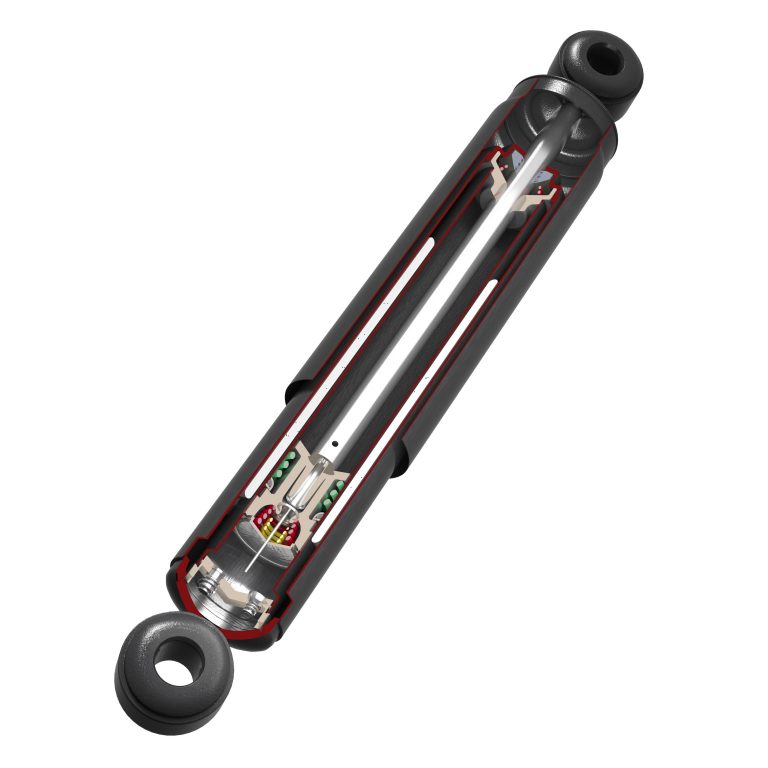Your truck’s shocks take a beating every day.
They cycle up and down constantly as you drive to soften your ride and reduce wear on your suspension. It is especially tough through the winter months and early spring, when your suspension is impacted by compacted snow and increased pot holes.
Conventional shocks are comprised of a few components:
- Working Chamber (the inner tube): Fills with oil.
- Reserve Chamber (the outer tube): Helps regulate oil pressure.
- Dust Cover: Covers the top of the shock.
- Piston Rod
- Rebound Valve: Located at the bottom of the piston rod, controls the flow of oil from one end of the working chamber to the other.
- Compression Valve: Located at the bottom of the shock, controls the flow of oil from the working chamber to the reserve chamber, and regulates the shock’s ability to dampen movement.
- Oil: Fills and works between the working & reserve chambers to dampen your ride when the shock is in use.

Gas-charged shocks are comprised of the same components, with the addition of liquid nitrogen in the reserve chamber. The pressurized gas reduces air bubbles in the oil. The formation of air bubbles, a common problem in conventional shocks, can lead to inconsistent shock performance. Pressurized gas in the reserve chamber of a gas shock not only reduces this aeration, but helps push oil from the reserve chamber into the working chamber to improve performance.
Like any system with moving components, a shock’s parts will wear with time. The valves and seals within a shock deteriorate, the oil loses viscosity, and the exterior bushings break down. The seal at the top of the shock can wear to the point of leaking oil, hindering the ability for the shock to function.
To avoid these kinds of damages, your shocks should be inspected every 6 months or 60,000 miles for leaking, body damage and loose or damaged bushings.
Have questions on shocks? Call or visit one of our JX Truck Center locations to talk with a Parts Professional who can help you learn more, and find the solution you’re looking for.





